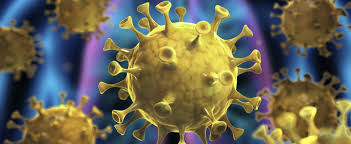How many people die after being infected with the novel coronavirus? Fewer than previously calculated, according to a study released Monday, but still more than die from the flu.
The research, published in the medical journal The Lancet Infectious Diseases, estimated that about 0.66% of those infected with the virus will die.
That coronavirus death rate, which is lower than earlier estimates, takes into account potentially milder cases that often go undiagnosed — but it’s still far higher than the 0.1% of people who are killed by the flu.
When undetected infections aren’t taken into account, the Lancet study found that the coronavirus death rate was 1.38%, which is more consistent with earlier reports.
Early in March, for example, Dr. Anthony Fauci, the director of the US National Institute of Allergy and Infectious Diseases, said that “if you just do the math, the math is about 2%.”
But he emphasized that the number could go down, saying that “as a group it’s going to depend completely on what the factor of asymptomatic cases are.”
That’s because death rates typically only consider reported coronavirus cases, which tend to be more severe, and thus brought to the attention of health care workers. Asymptomatic cases — or mild cases — may not always be counted.
In this study, researchers tried to estimate the true “infection fatality rate.” In other words, out of everybody infected — not just those sick enough to get tested — how many people will die?
To find out, researchers looked at how widespread infections were among people repatriated to their home countries on flights from Wuhan, China.
According to the study, these people received PCR tests — a type of test that would be able to identify how many of those travelers were shedding the virus, even if they didn’t show symptoms.
Researchers combined that data on “infection prevalence” with public information on reported cases and deaths, estimating the overall death rate to be about two-thirds of 1%.
That number, though, went up in older adults, with approximately 7.8% of those 80 or older estimated to die after infection. And deaths were estimated to be exceedingly rare in children younger than 9, with a fatality rate of just 0.00161%.
For age groups younger than 40, the death rate was never higher than 0.16%, according to the study. Out of 1,000 young adults infected, then, about 1 or 2 could die, with the youngest people facing the lowest risk.
“There might be outlying cases that get a lot of media attention, but our analysis very clearly shows that at aged 50 and over, hospitalisation is much more likely than in those under 50, and a greater proportion of cases are likely to be fatal,” said Azra Ghani, a professor at Imperial College London and an author of the study, in a statement.
Researchers looked at other data, too, including tens of thousands of cases inside and outside of mainland China, as well as 3,711 people who were aboard a coronavirus-stricken cruise ship, the Diamond Princess.
The study found that it could take weeks for people to recover from coronavirus, which could magnify potential health care shortages: The longer it takes for people to get better, the longer they may need precious hospital space and resources.
The average time from onset of symptoms to hospital discharge was about 25 days, researchers found, although patients might not have been hospitalized during the early days of their illness. Among those who succumbed to the virus, death came about 18 days after people started showing symptoms.
In an article accompanying the research, Shigui Ruan, a professor of mathematics at the University of Miami, emphasized that estimating the coronavirus death rate “in real time during its epidemic is very challenging.”
But understanding how many people die from a virus, he said, is an important piece of data that can help guide responses from governments and public health authorities.
Ruan, who was not involved with the research, also noted that the coronavirus fatality rate is low for younger people. But he stressed that “it is very clear that any suggestion of COVID-19 being just like influenza is false,” with coronavirus remaining far deadlier than the seasonal flu.
CNN
 Lebanese Ministry of Information
Lebanese Ministry of Information



